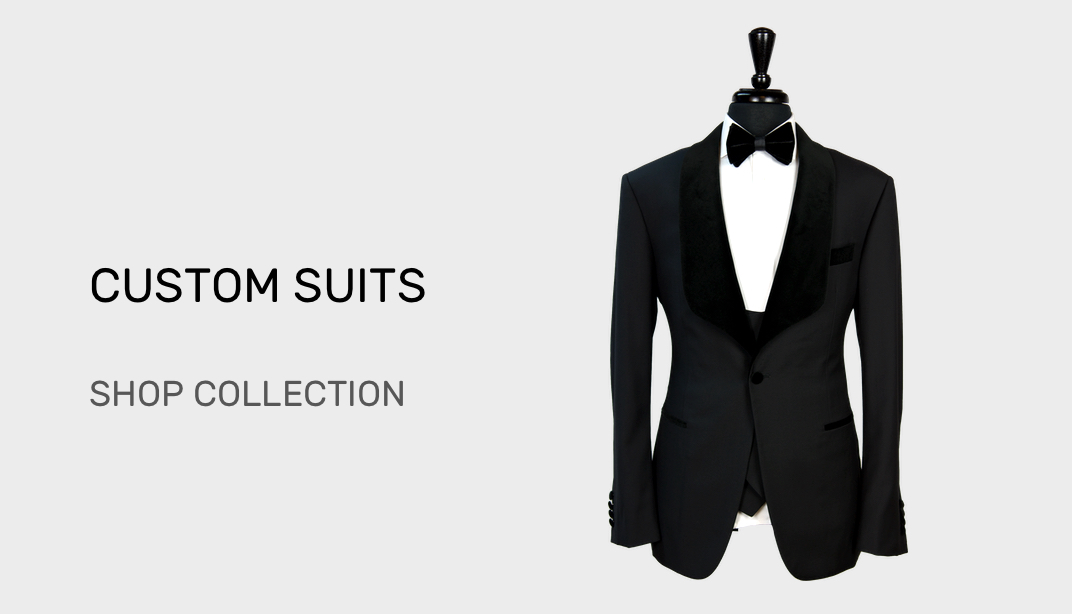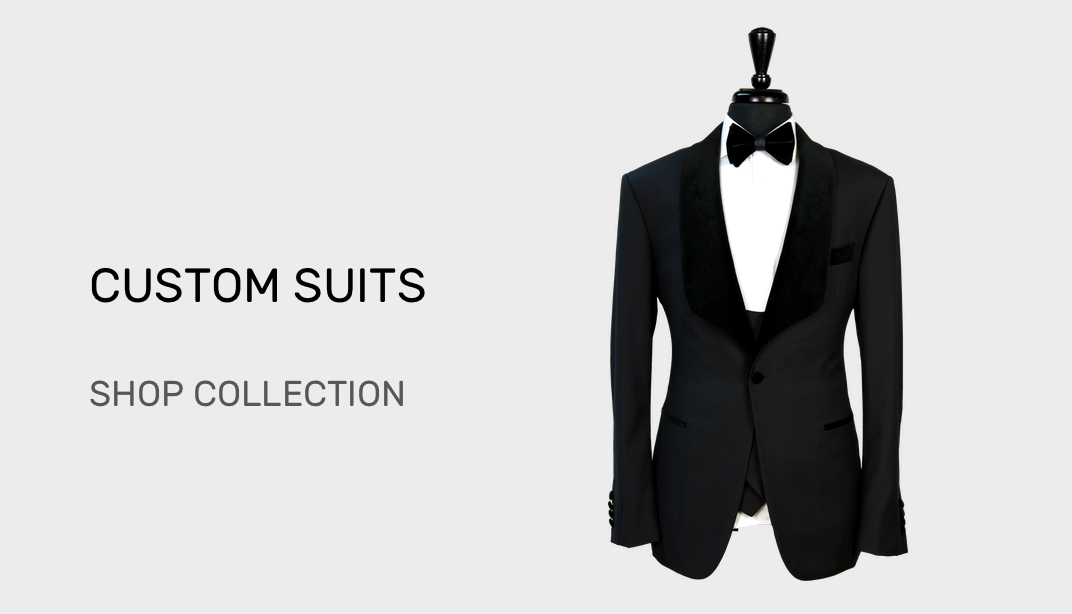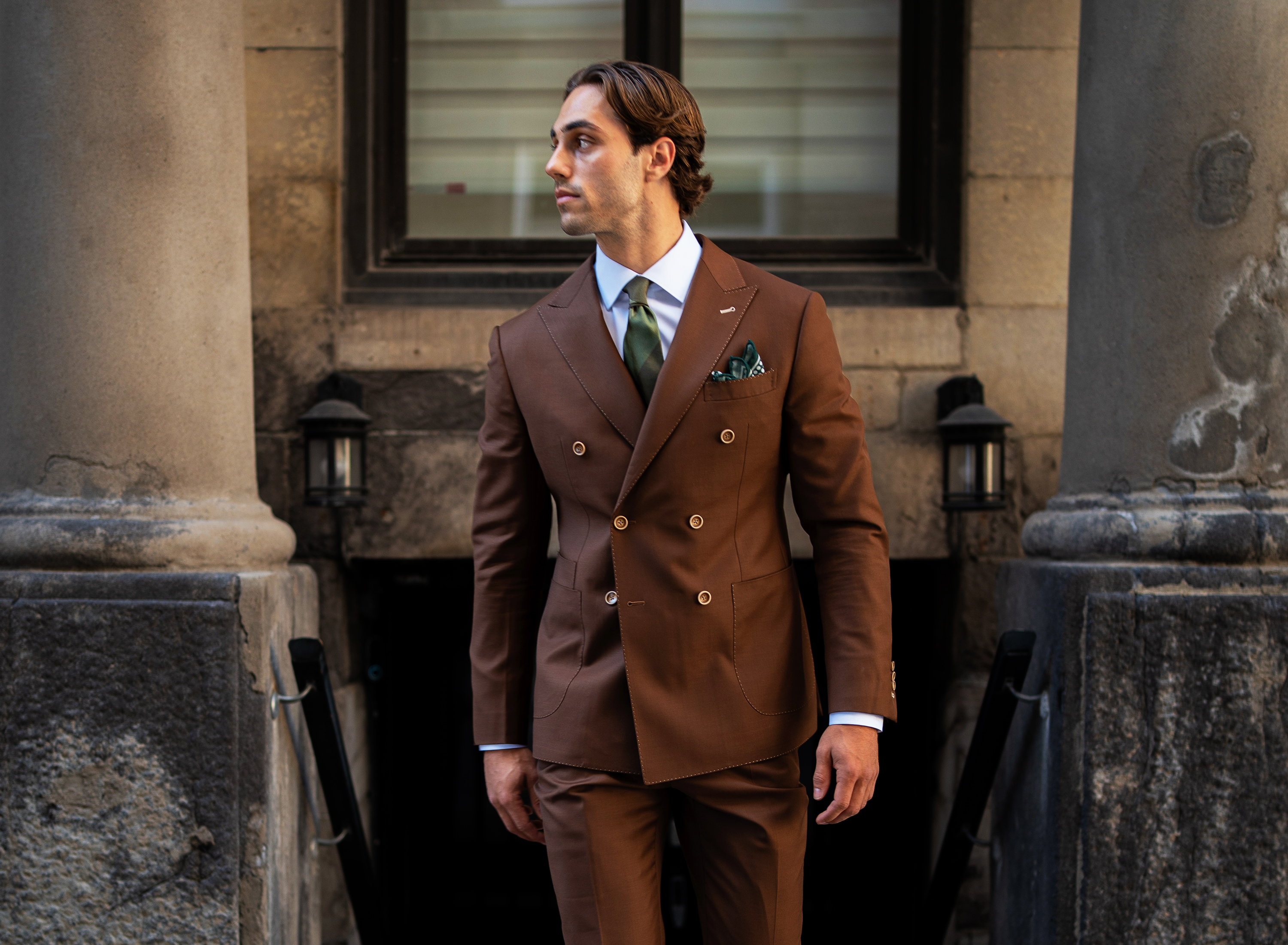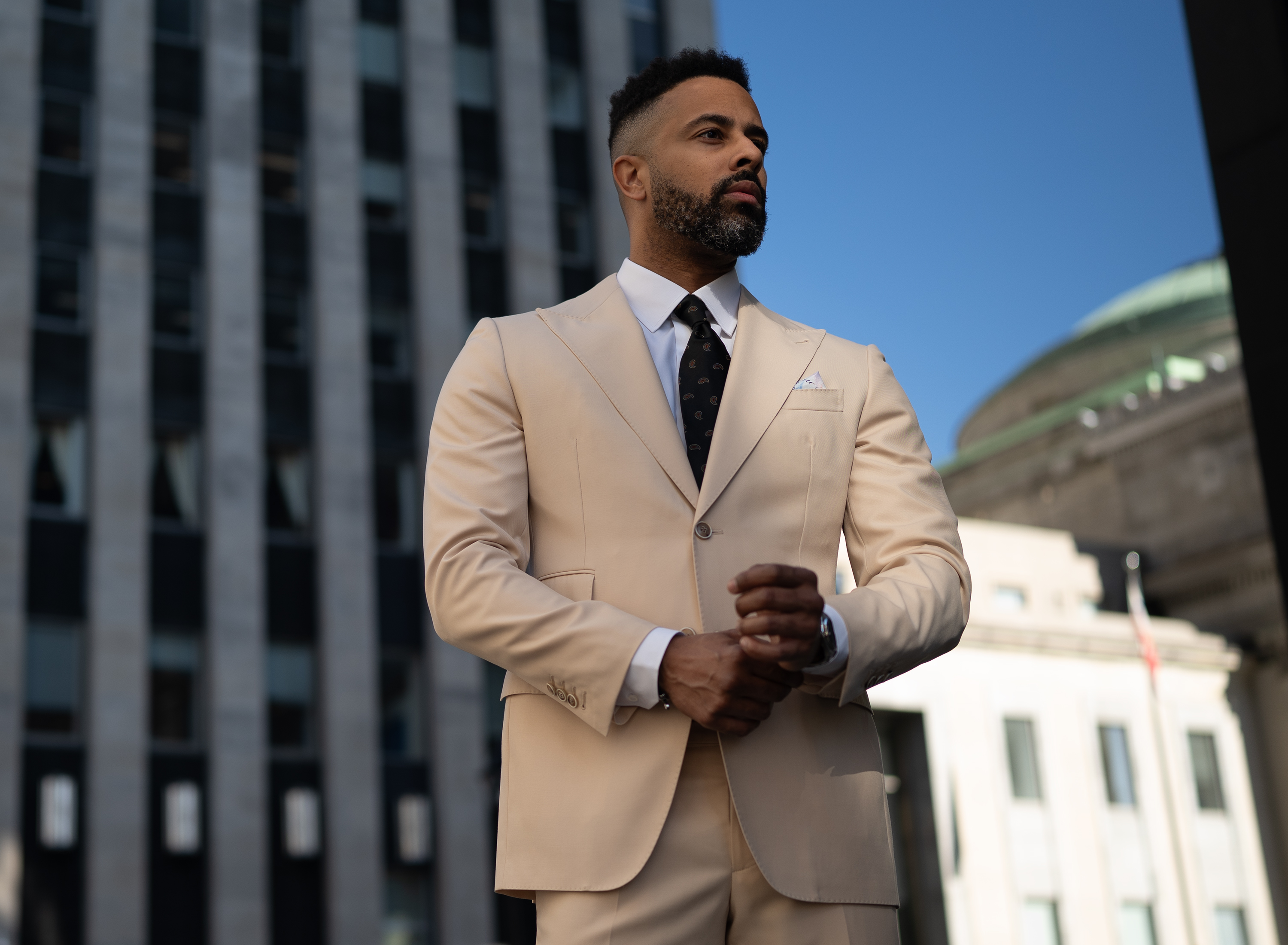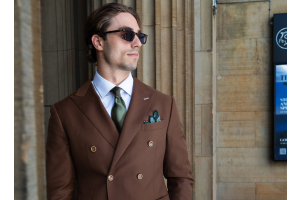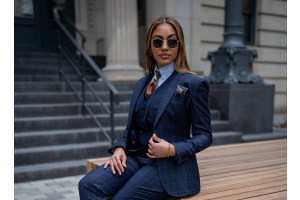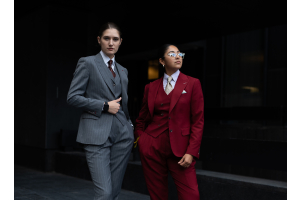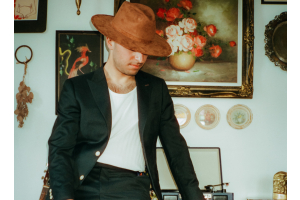-
MENSWEAR
-
Questions?
Schedule Appointment Schedule Virtual Consultation
Talk to us on our Live Chat or call us at 1-855-979-SUIT(7848)
-
-
WOMENSWEAR
-
Questions?
Schedule Appointment Schedule Virtual Consultation
Talk to us on our Live Chat or call us at 1-855-979-SUIT(7848)
-
-
DESIGN
-
Questions?
Schedule Appointment Schedule Virtual Consultation
Talk to us on our Live Chat or call us at 1-855-979-SUIT(7848)
-
-
SHOWROOMS
-
Questions?
Schedule Appointment Schedule Virtual Consultation
Talk to us on our Live Chat or call us at 1-855-979-SUIT(7848)
-
- Book Appointment
Toggle Nav


Search
Skip to Content
- FAST DELIVERY
- CUSTOM MADE
- PREMIUM FABRICS
-
MENSWEAR
-
![Suitablee header menu image]()
Questions?
Schedule Appointment Schedule Virtual Consultation
Talk to us on our Live Chat or call us at 1-855-979-SUIT(7848)
-
-
WOMENSWEAR
-
![Suitablee header menu image]()
Questions?
Schedule Appointment Schedule Virtual Consultation
Talk to us on our Live Chat or call us at 1-855-979-SUIT(7848)
-
-
DESIGN
-
![Suitablee header menu image]()
Questions?
Schedule Appointment Schedule Virtual Consultation
Talk to us on our Live Chat or call us at 1-855-979-SUIT(7848)
-
-
ACCESSORIES
-
SHOWROOMS
-
![Suitablee header menu image]()
Questions?
Schedule Appointment Schedule Virtual Consultation
Talk to us on our Live Chat or call us at 1-855-979-SUIT(7848)
-
- Book Appointment
- Pricing
- WEDDINGS
- BUSINESS
- GIFT CARDS
OUR FIT GUARANTEE!
YOUR FIRST PURCHASE? NO WORRIES!
The majority of our customers find their initial purchase to be a perfect fit. Our advanced algorithms and Artificial Intelligence, refined by thousands of diverse body types in our database, ensure a tailored fit with a 95% success rate. Whether you opt for self-measurement or use our Automatic Sizing Technology, rest assured of a near-perfect fit.
OUR FIT GUARANTEE POLICY ENSURES A HASSLE-FREE PURCHASE:
- 1. Need alterations? Simply visit your local tailor, snap a picture of the receipt, and send it to us. We'll provide a store credit or refund (up to $100 per suit).
- 2. Collaborate with our team. If alterations aren't feasible, SUITABLEE will remake your first order to meet your sizing specifications.
-
MENSWEAR
-
Questions?
Schedule Appointment Schedule Virtual Consultation
Talk to us on our Live Chat or call us at 1-855-979-SUIT(7848)
-
-
WOMENSWEAR
-
Questions?
Schedule Appointment Schedule Virtual Consultation
Talk to us on our Live Chat or call us at 1-855-979-SUIT(7848)
-
-
DESIGN
-
Questions?
Schedule Appointment Schedule Virtual Consultation
Talk to us on our Live Chat or call us at 1-855-979-SUIT(7848)
-
-
SHOWROOMS
-
Questions?
Schedule Appointment Schedule Virtual Consultation
Talk to us on our Live Chat or call us at 1-855-979-SUIT(7848)
-
- Book Appointment

- Home
- The SUITABLEE Perspective
- Fits & Fabrics
- The Different Types of Fabric Weaves
The Different Types of Fabric Weaves | Custom Suits Made Easy.
English
English
Français

Fabric weave is the way threads are interlaced to create cloth. It sounds technical, but it is one of the fastest ways to understand how a fabric will actually behave on your body. The weave influences texture, drape, breathability, durability, shine, and wrinkle resistance, even when two fabrics share the same fiber content.
Before we dive in, here is a quick clarity check that helps you shop smarter:
- Weave is the structure (plain weave, twill, basket weave).
- Pattern is the design (Prince of Wales check, houndstooth, gingham).
- Finish is post-weaving treatment (brushed, puckered, washed, mercerized).
This guide breaks down the most common weaves and weave-related effects so you can choose the right fabric for a suit, jacket, or shirt with confidence.
Quick Guide: How to Choose the Right Weave
- For crisp formality: poplin, broadcloth, pinpoint
- For drape and wrinkle forgiveness: twill, herringbone, sharkskin
- For breathability and warm weather: hopsack, open basket weaves, seersucker
- For subtle texture that still reads professional: end-on-end, birdseye, dobby
For statement texture and woven designs: jacquard, bold herringbone, solaro effects
Plain Weaves
Plain weaves are smooth, clean, and classic. They often feel crisp and look polished, especially in shirting.
Broadcloth and Poplin
Broadcloth is often referred to as poplin, and reversely poplin is often referred to as broadcloth. The two are essentially the same, as they are both plain weaves that are quite thin, smooth and flat. However, poplin can sometimes have yarns of varying weights in the warp and weft, whereas broadcloths have a symmetrical construction.
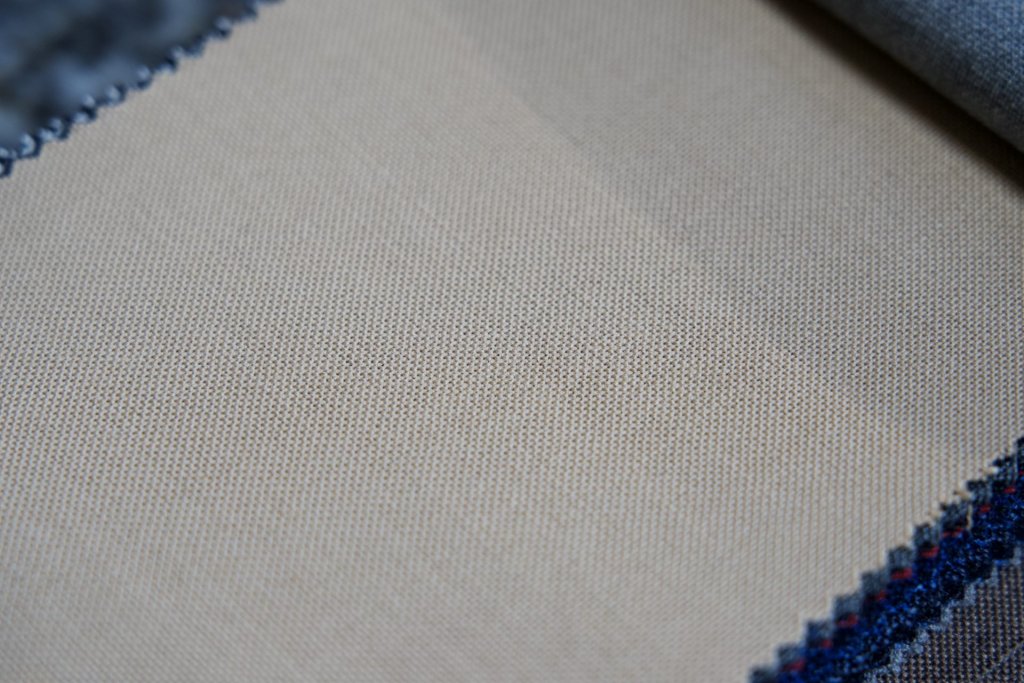
Twill
Twill is often recognized by its visible texture, which is made up of a diagonal weaving that can range from very fine and subtle, to very thick and noticeable, such as Imperial or Cavalry twill. Twills most often have some shine to them, however the level of shine depends on the type of weave, the materials used, and its colour.
Being made of a very tight weave, twill can have a very high super number—which refers to the number of hanks that could be spun from a pound of raw wool from a given fabric. Twill doesn’t tend to look crisp, but it does drape quite well on the body, and doesn’t wrinkle easily.
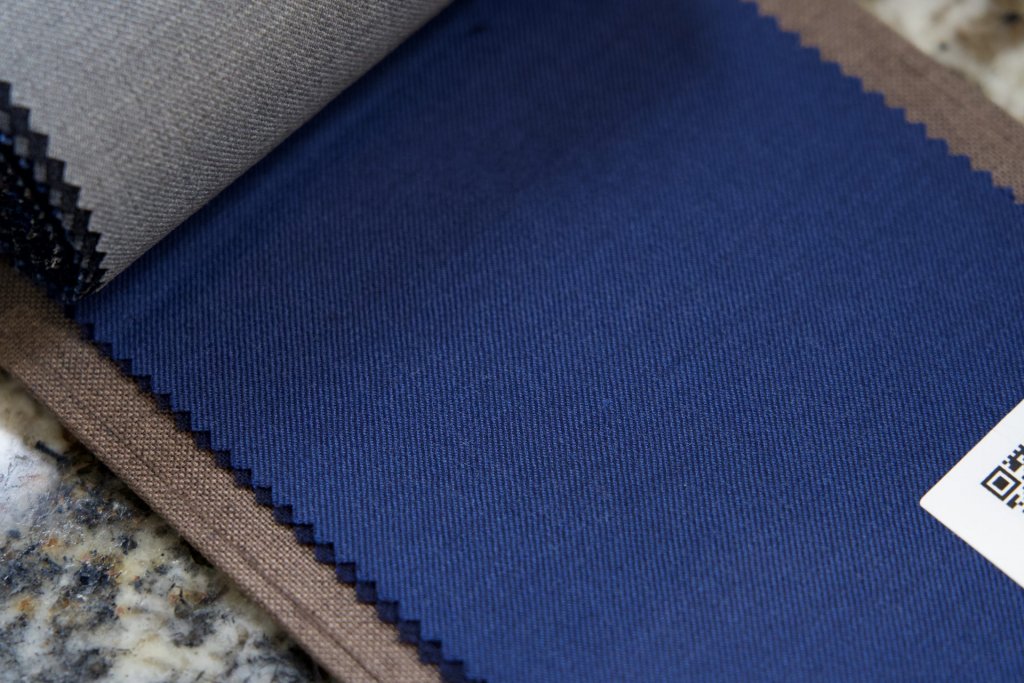
Rib Weave
A rib weave is an enlarged plain weave, where the rib can be in the warp or weft, although it is more commonly in the weft.
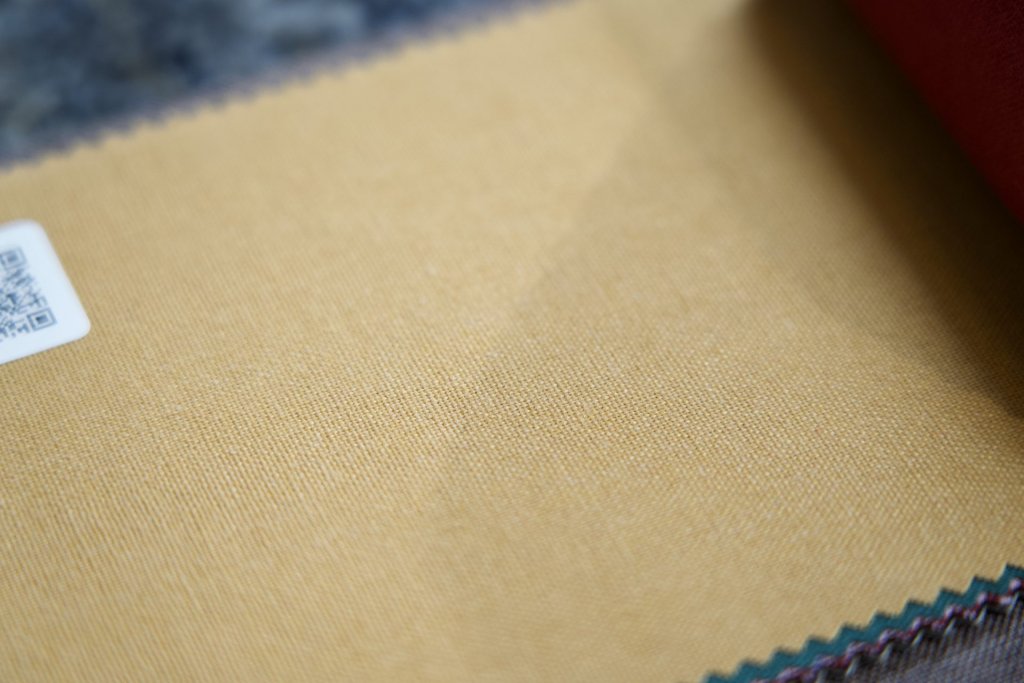
Herringbone
Herringbone is type of twill characterized by a chevron V-shape weave pattern. It gets its name due to its pattern’s resemblance to the bones of a herring fish. What’s great with herringbone that it is versatile, being suitable for both formal occasions as well as casual wear.
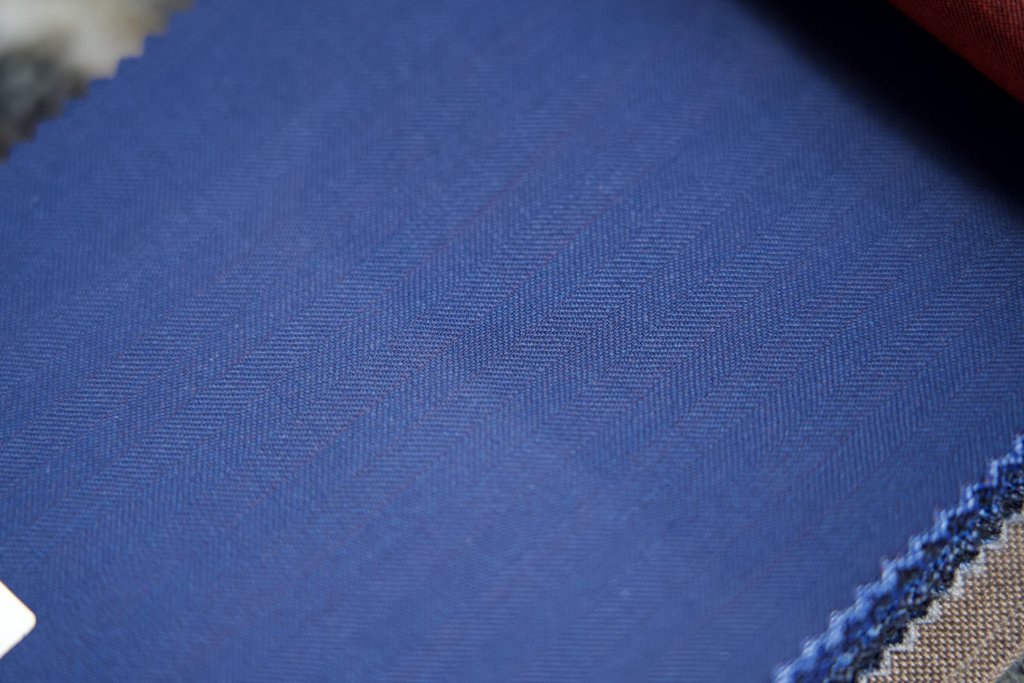
Sharkskin
Sharkskin, also called a pick-and-pick in the UK, is made from a twill that has a yarn sequence of 1 light then 1 dark in both the warp and the weft. Sharkskin fabrics are commonly woven as a herringbone.
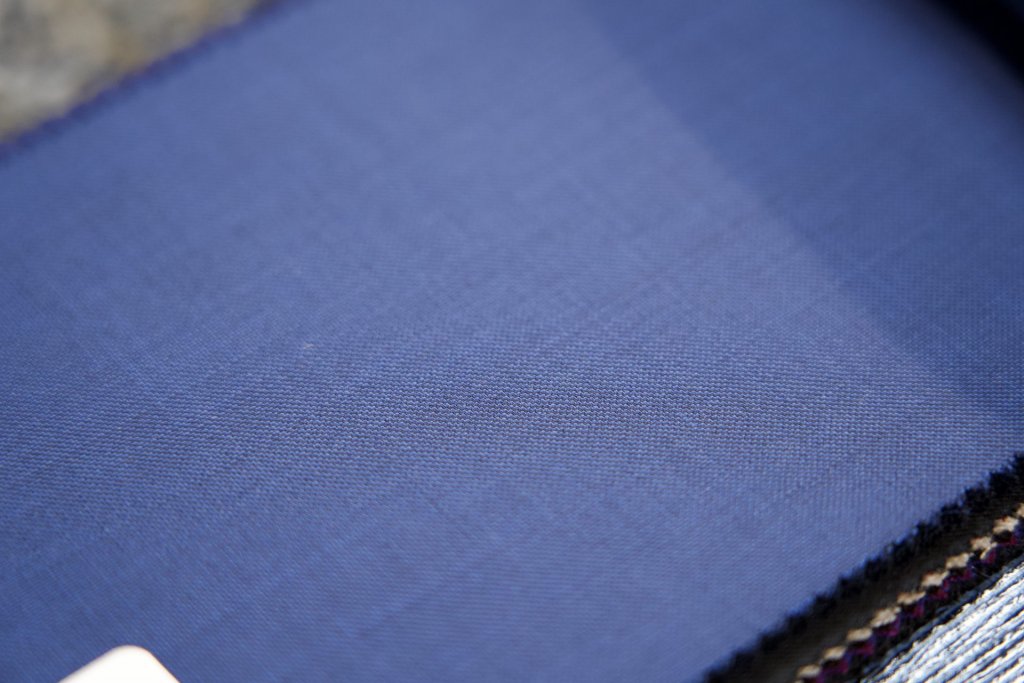
Solaro
A classic solaro is made with a light brown warp and a red weft, and the colour contrast of the two gives it a plea singling vibrant quality.
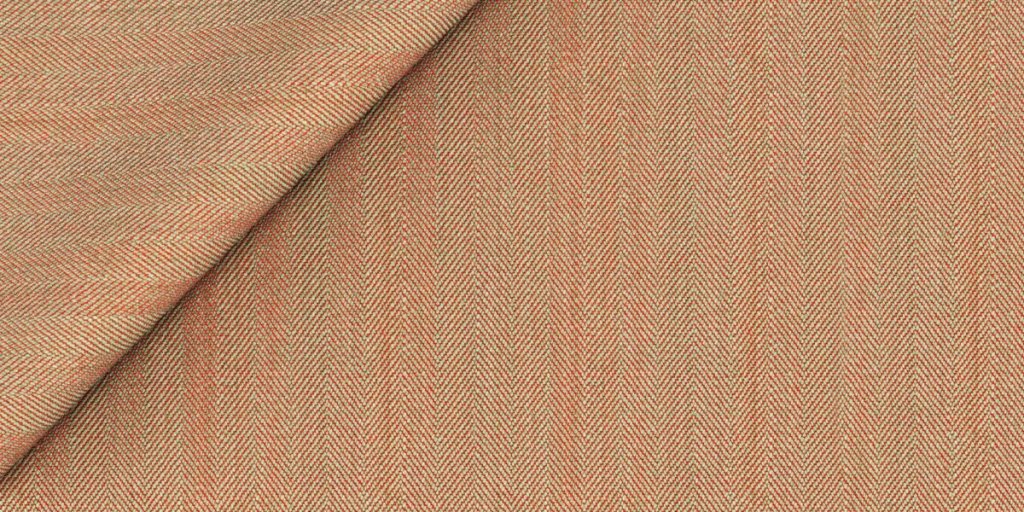
Hopsack
Hopsack is a modification of a plain weave, where two threads in the warp are followed by two threads in weft, which appear like small cubes. This type of weave is very popular for jackets, but can sometimes be used for full suit or for outerwear.
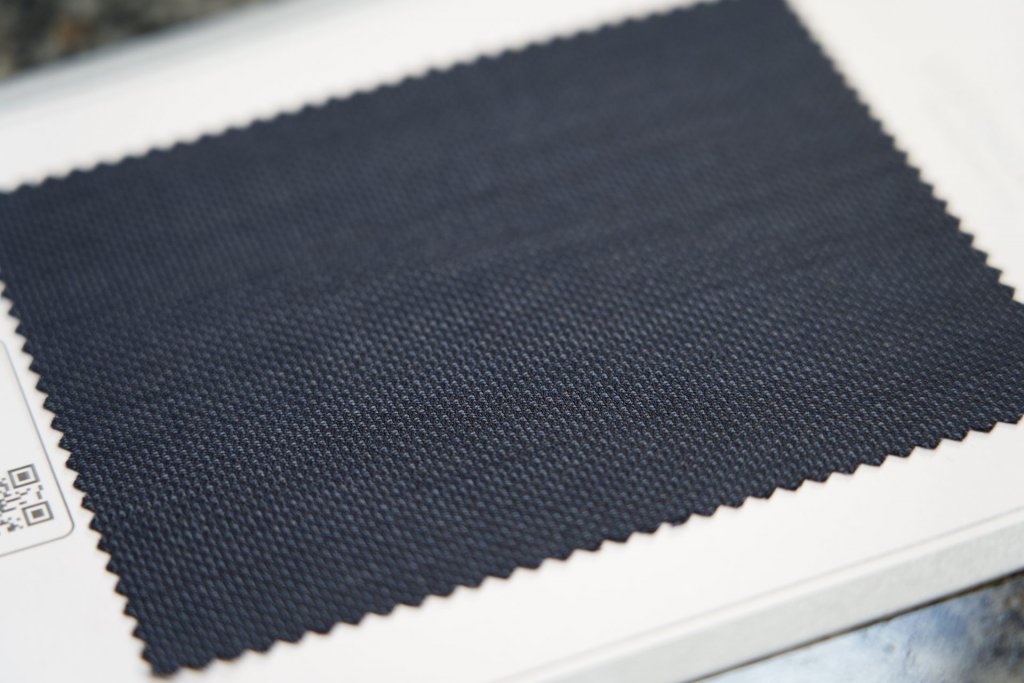
Prince-of-Wales Check
The Prince-of-Wales Check, also called glen check, and originally named Glenurquhart check, is a type of checked print that incorporates a houndstooth weaving pattern in its design.
Originally, garments with this weave were worn by the Countess of Seafield’s gamekeepers at the beginning of the 19th century.
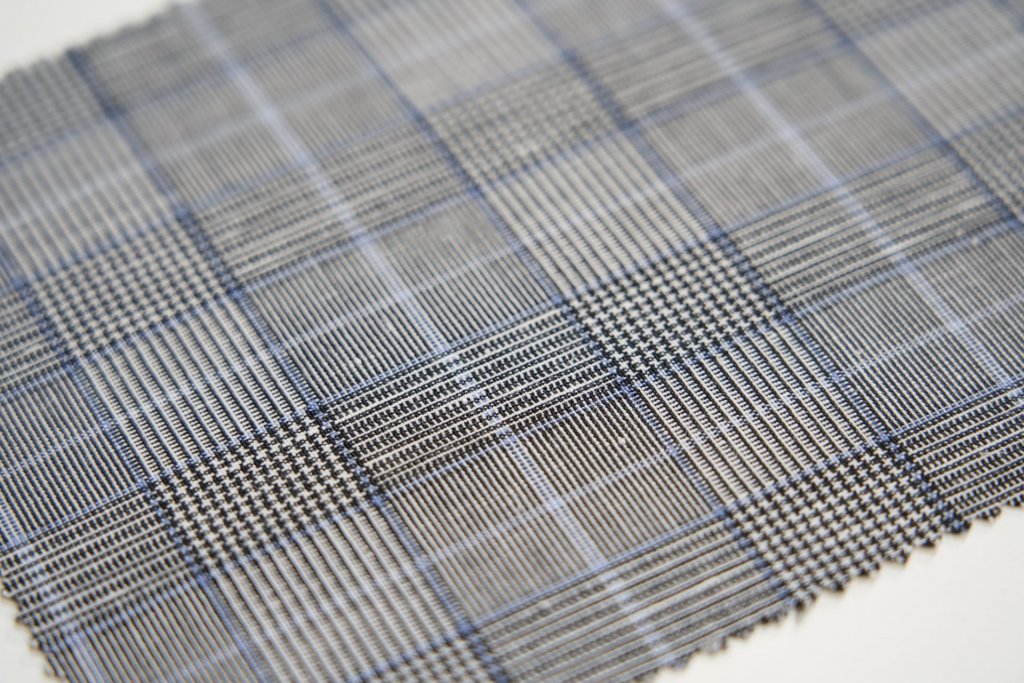
Houndstooth
Houndstooth fabrics are based on a two by two twill, with a four and four sequence of colour for both warp and weft, with four yarns of the light colour and four of the dark colour.
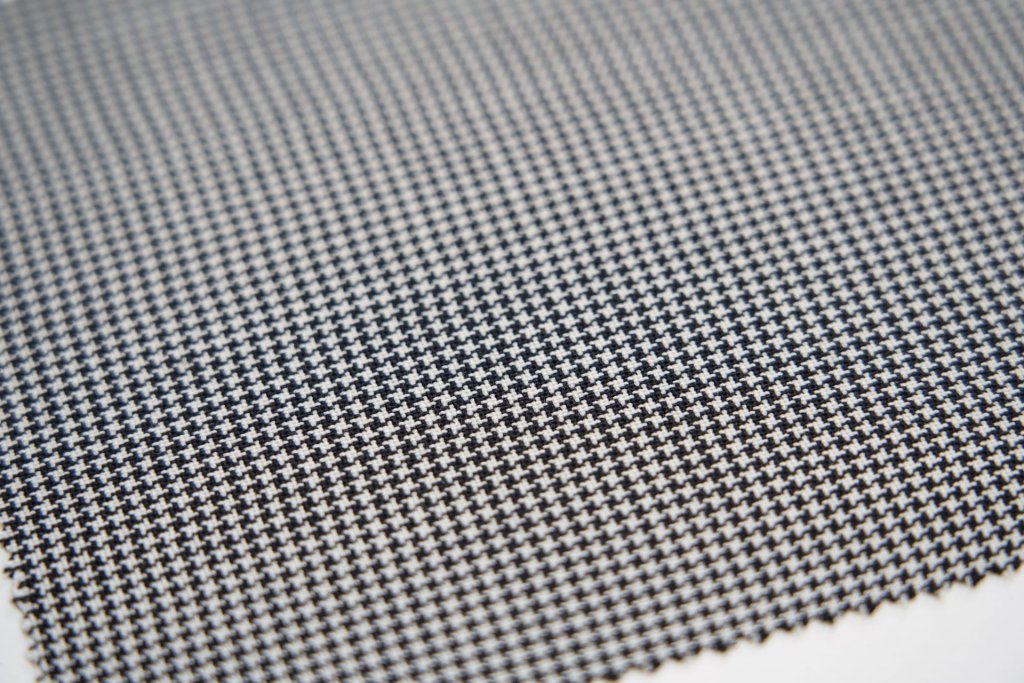
Oxford Cloth
Oxford Cloth uses slightly thicker threads and is woven more loosely, which makes its texture slightly rougher and more durable. Its weaving pattern consists of a basketweave where one yarn is crossed over two yarns. It was originally intended as a sportswear material so it is viewed as less formal and can be warn casually without being perfectly pressed.
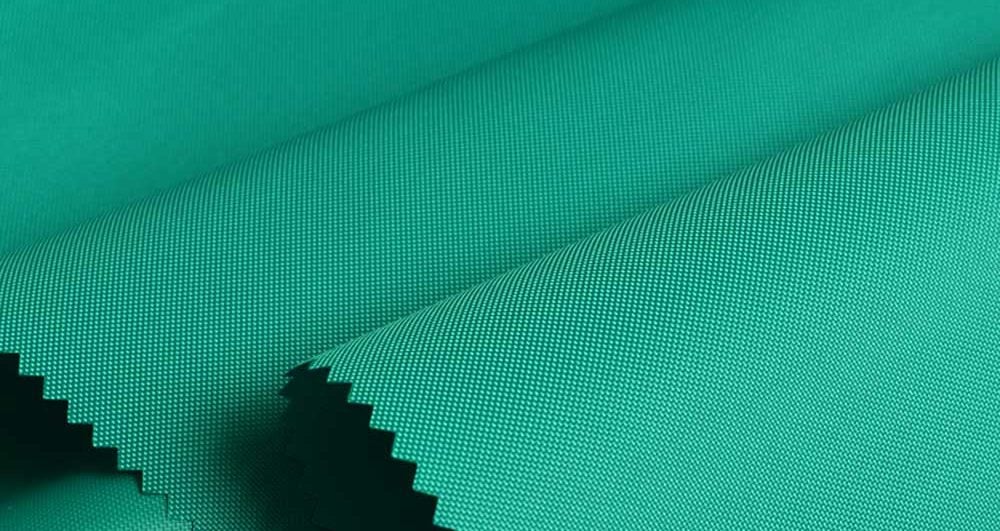
Pinpoint
Pinpoint and oxford cloth have the same weave, save from the fact that pinpoint has a tighter weave made up of finer yarns, which also makes it slightly more formal than oxford cloth. Pinpoint fabrics are on the opaque side, which might not suit special events, but is great are a professional context. Pinpoint fabrics’ heavy construction also makes them durable, so garments made using such fabrics should last you a long time.
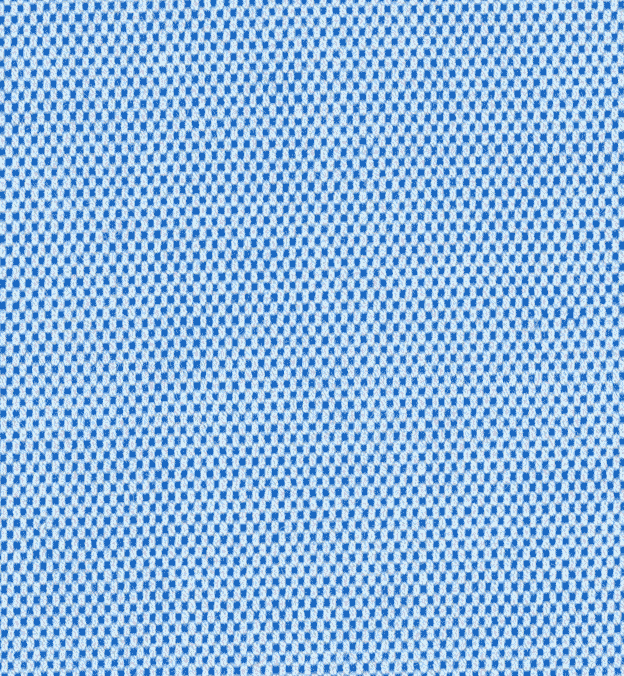
Chambray
Chambray is similar to broadcloth in that it is a plain weave. However, it uses thicker yarns, which gives it a more laidback workwear look. Chambray fabrics also generally contains white threads running through the width of the fabric and this contributes to its style. Chambray is not a formal fabric and is best warn in casual settings.
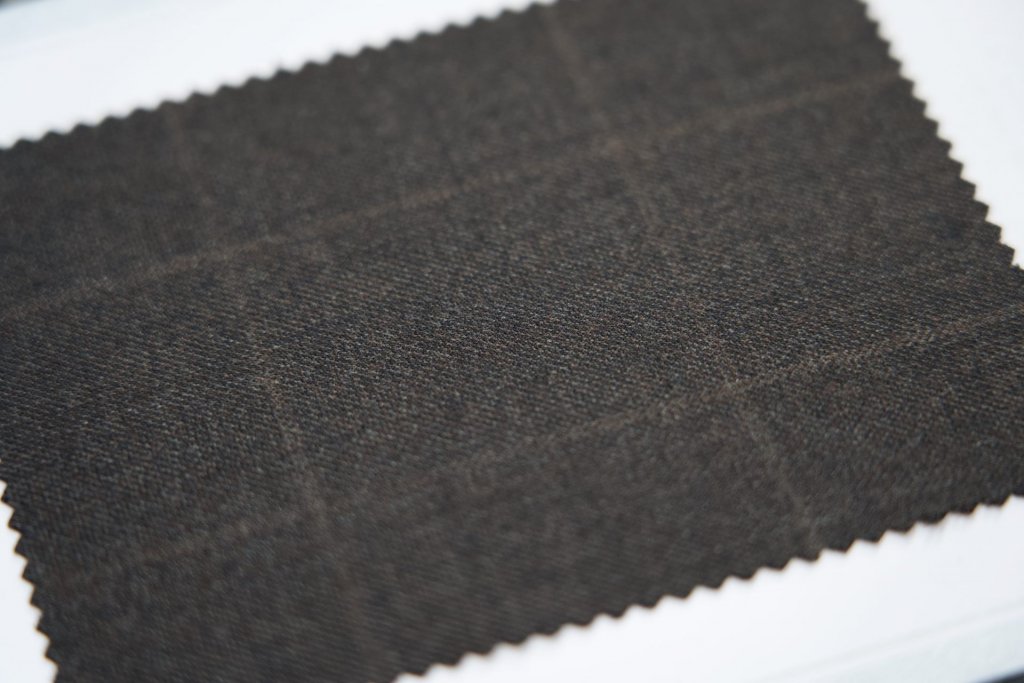
Dobby
Dobby fabrics are quite varied, with some bearing a similarity to broadcloth, and others bearing a likeness to twill. Dobby is also close to Jacquard in that the only difference between the two lies in the manner in which the pattern is woven into the fabric. The warp yarns of a Dobby loom can only be controlled in groups, and when a harness goes up or down, all the warp yarns attached to it move along with it. This limits how complex the woven pattern can be. They are lovey if you enjoy some subtle texture in a fabric.
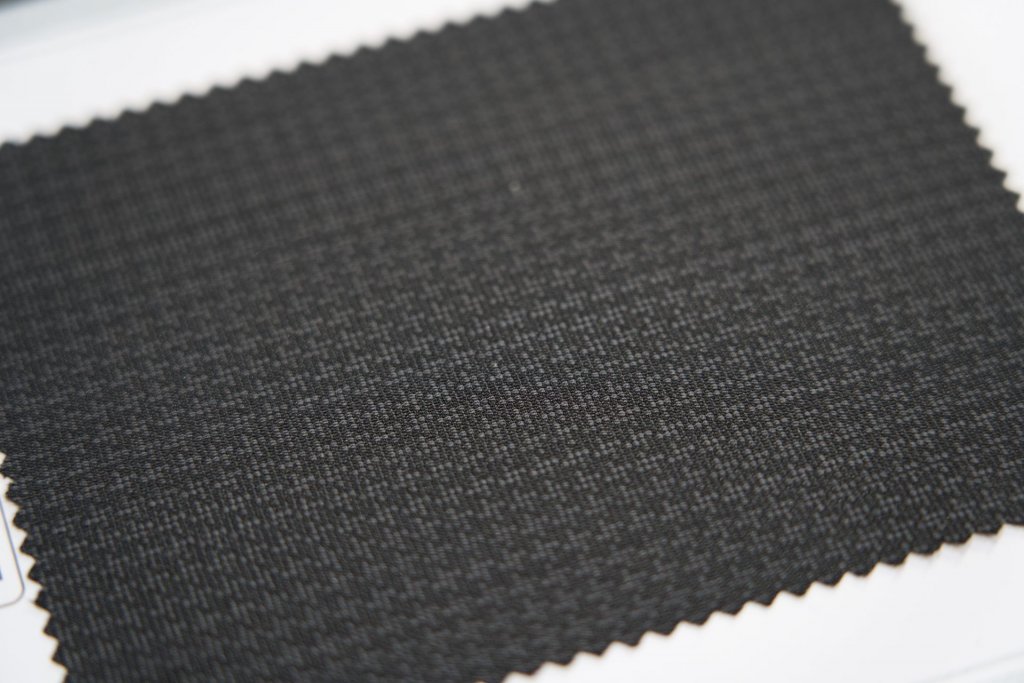
Birdseye
End-on-end fabrics are woven with white threads in the weft and coloured thread in the warp. The fabric might seem made up of a solid colour from afar, but more texture can be distinguished as one moves closer. It also is typically lighter in weight, which might be nice in warmer climates.
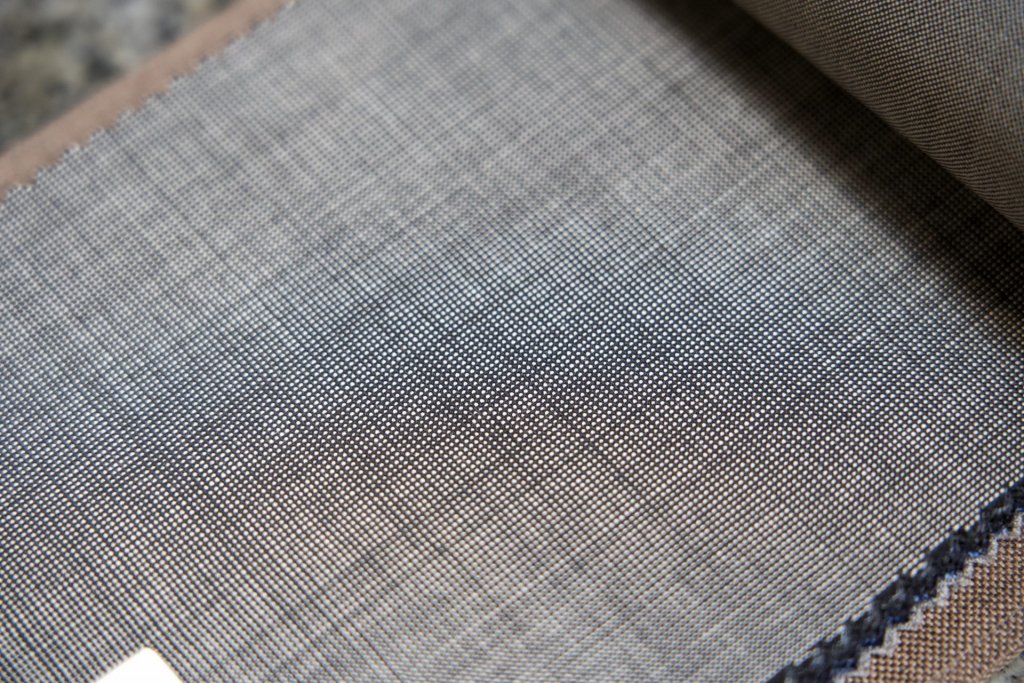
Melange
Melange is characterized by the fact that it is made up of multi-coloured yarns, and any type of weave can be a Melange so long as it has that multi-coloured characteristic. Often times the variation in colour ranges between two or three different hues with the intention of creating a heathered look. Melange and mouline fabrics are sometimes mistaken for each other as they can look similar. Unlike Melange, Mouline fabrics are made from yarns of a consistent colour but are twisted together to achieved the heathered look.
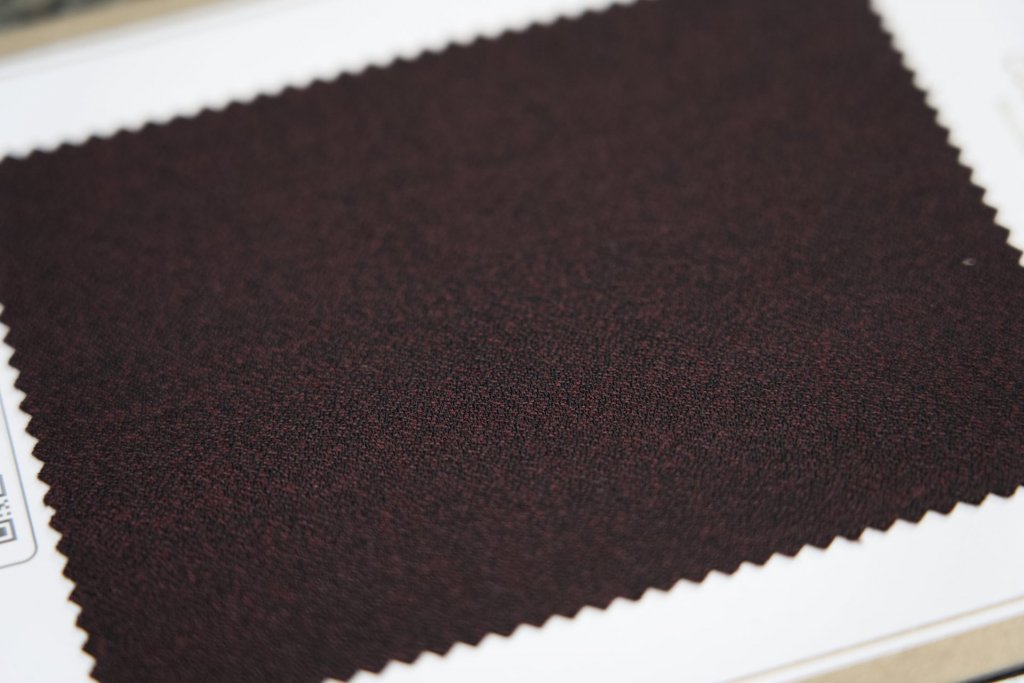
Seersucker
Seersucker was invented as a fabric for warm weather specifically, and is characterized by its crinkled appearance, which is created in the finishing of the fabric. Seersucker fabrics come in varying colours and patterns, but the most popular is the classic blue pinstripe.
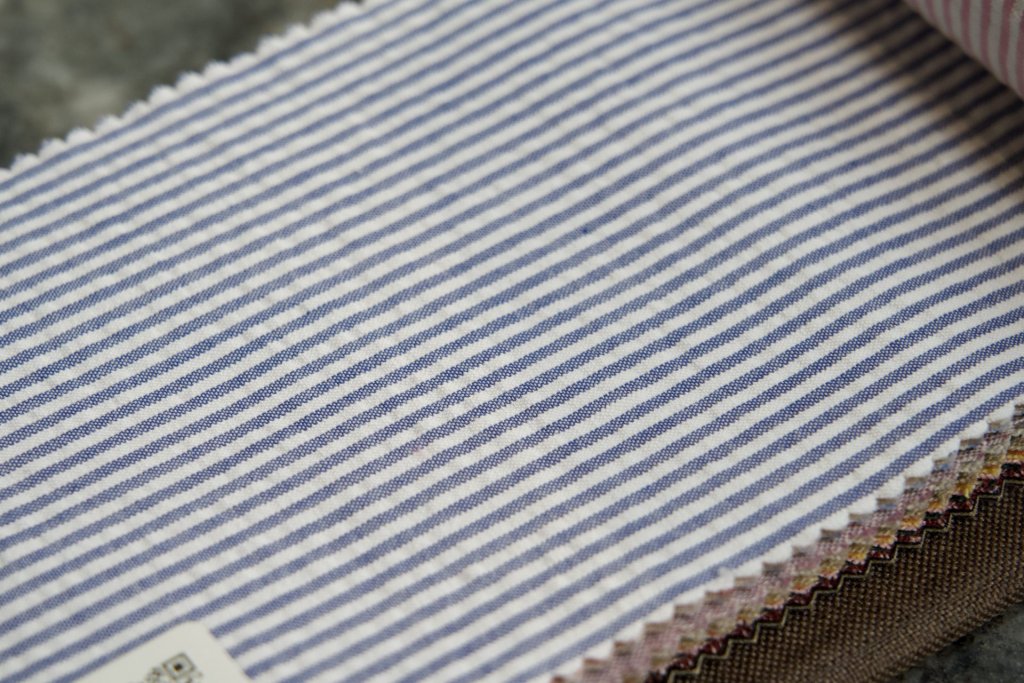
Gingham
Gingham is a plain weave, typically made completely of cotton fibres but can include blends with man-made fibres. Gingham gets its colour and pattern from carded or combed yarns and its pattern can vary from stripes, to checks, to plad.
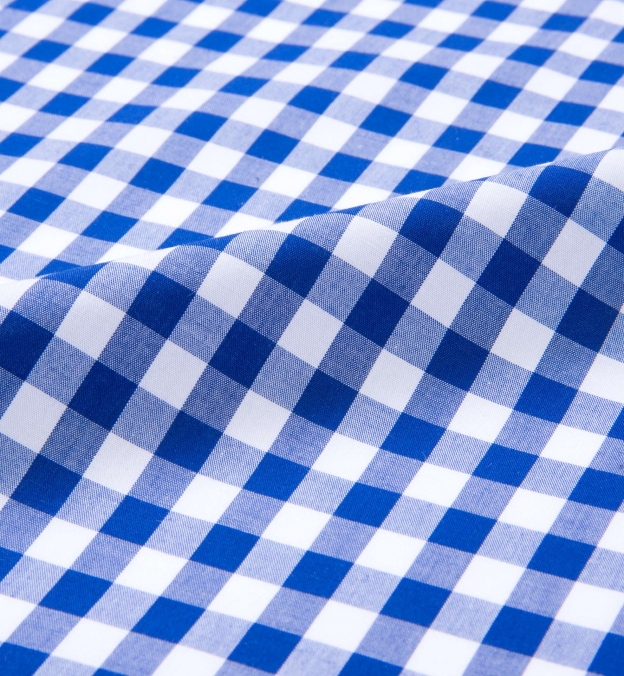
Jaquard
A characteristic of Jacquard fabric is its raised pattern that is woven rather than printed onto the fabric. Florals, geometrics, and damasks are popular jacquard patterns. The drape-ability of the textured fabric is varied but usually tends to be on the stiffer side, but it tends to be more durable, depending on the fibers used.
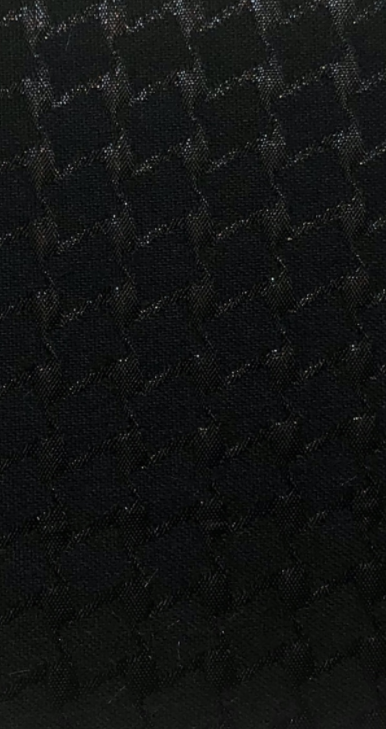
How to Choose the Right Weave for Your Wardrobe
Start with climate and use case:
- Hot weather and breathability: hopsack, basket weaves, seersucker
- Business formality and crisp appearance: poplin, broadcloth, pinpoint
- Wrinkle resistance and travel: twill, herringbone, sharkskin, birdseye
- Texture without loud pattern: end-on-end, dobby, birdseye
- Statement fabrics: jacquard, solaro, bold herringbone
A simple rule: plain weaves look crisp; twills and textures usually drape more naturally and hide wrinkles better.
Care and Longevity Tips by Weave
- Smooth plain weaves: show wrinkles more easily; steam and store properly
- Open weaves (hopsack): breathable but can snag; handle carefully
- Twills and textured weaves: generally forgiving; benefit from brushing and rest between wears
- Seersucker: do not over-press; the texture is the point
For suits, rotate wears and let garments rest. For shirts, hang to dry when possible and steam lightly for the cleanest finish.
The SUITABLEE Perspective
Think of weave as the “architecture” of fabric. It’s the hidden structure that decides whether a cloth feels crisp or fluid, whether it breathes in summer or holds warmth in cooler months, and whether it reads clean from a distance or reveals texture up close. Two fabrics can share the same fiber content and still behave completely differently simply because the weave is different.
At SUITABLEE, we treat weave selection as a style decision and a performance decision at the same time. Poplin and broadcloth create a sharp, polished finish. Twills and herringbones add depth with better drape and wrinkle forgiveness. Basket weaves like hopsack open things up for airflow and effortless warm-weather tailoring. When you understand these differences, you stop choosing fabric by guesswork and start choosing it with intention.
Explore our Fabric Collection during Design Your Suit process to see how each weave changes the look and silhouette of your custom suit. If you want a second set of eyes, book an appointment and let a dedicated specialist help you match the right weave to your lifestyle, climate, and occasion.
Share on Facebook
Share on X
Share on Pinterest
Comment(s)
Available in:
English (US)
(Current)
French (France)
Available in:
English (US)
(Current)
French (France)
Categories
- Fits & Fabrics (6)
- Style Guides (6)
- Wedding Style (6)
- Trends & Inspiration (4)
Recent Posts


